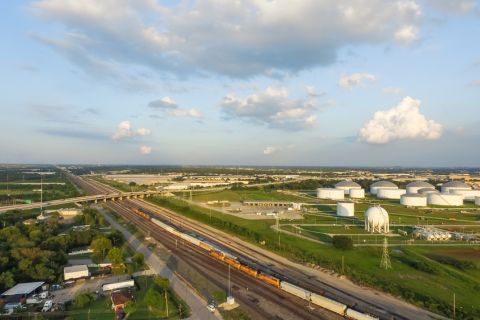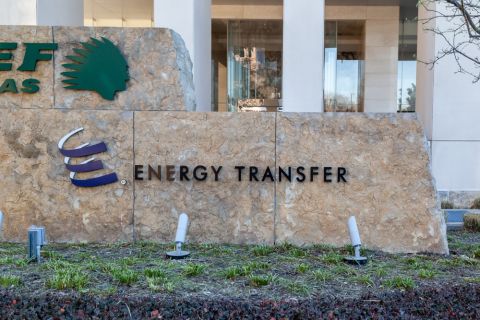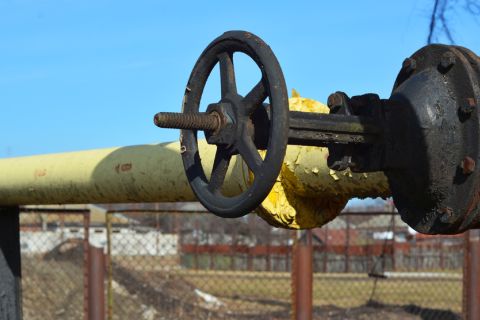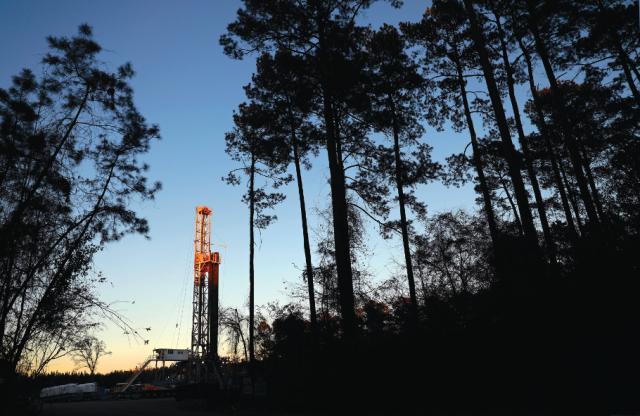
The sun sets on the piney woods near Greenwood, La., where a rig is drilling a well in the Haynesville Shale. (Photo by Tom Fox, courtesy of Oil and Gas Investor)
The Haynesville Shale’s location is helping keep interest in the play high. Stretching across East Texas and North Louisiana, the primarily dry gas play offers players shorter access to Gulf Coast ports. The rise of U.S. LNG and gas exports has made the Haynesville attractive with its proximity to hubs in South Louisiana and Texas, according to Drillinginfo.
In the decade or so since the opening of the Haynesville Shale play by Chesapeake Energy, the region’s fortunes have peaked, troughed and are now ascending again. Gas production for the fourth quarter of 2018 was forecast to hit about 221 MMcm/d (7.8 Bcf/d), according to Drillinginfo, up from about 164 MMcm/d (6 Bcf/d) in the fourth quarter of 2016. Production for year-end 2019 is forecast at about 229 MMcm/d (8 Bcf/d).
In an exclusive report provided to E&P, Drillinginfo noted that more than 7,000 horizontal wells had been spudded in the Haynesville over the past decade. Spudding activity declined from 2010 to 2016 but has rebounded in recent years. Wells coming online in 2017 and 2018 are reaching 24-month cumulative values that were higher than EURs for wells completed before 2016, according to the market analysis firm.
Drastic improvements in well performance have helped grow production since the start of 2017. Renewed interest and improved designs in completions in 2016 are cited in the report as having brought about the step change in well performance and consistent growth. Proppant intensity has greatly increased in the Cotton Valley Sands and Haynesville and Bossier shales, the report noted, with lateral lengths reaching about 2.4 km (1.5 miles) long.
Operators in the region have time to continue making improvements in well performance as the proposed Haynesville Global Access Pipeline (HGAP) is set for in-service beginning in 2023. “HGAP will connect the Haynesville Shale with growing markets in Southwest Louisiana, where natural gas demand is expected to triple, reaching approximately 12 Bcf/d [340 MMcm/d] by 2025,” said Tellurian President and CEO Meg Gentle in a press release. “HGAP will improve the connection between North and Southwest Louisiana, debottlenecking existing pipeline routes and providing shippers access to expanding markets.”
News of the construction, ownership and operatorship of the $1.4 billion 42-in. diameter pipeline was announced by HGAP LLC, a subsidiary of Tellurian Inc., in early 2018. The pipeline will stretch about 322 km (200 miles) from northern Louisiana south toward Gillis, La., and will have a delivery capacity of about 105 MMcm/d (3.7 Bcf/d) of natural gas from the Haynesville/Bossier shale area, according to HGAP.
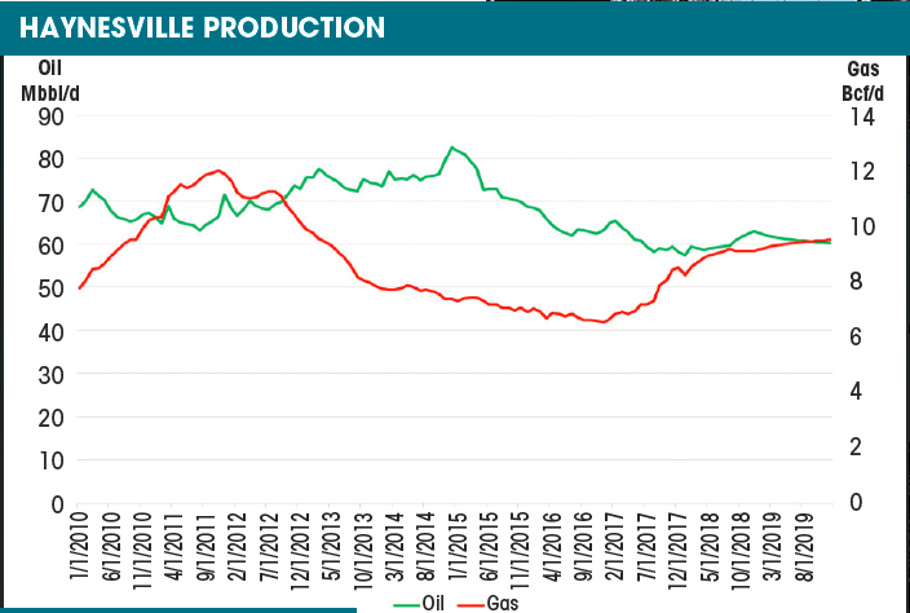
Gas production in the Haynesville peaked in the fourth quarter of 2011 with an all-time high of about 292 MMcm/d (10 Bcf/d) and reached its low at about 164 MMcm/d in the fourth quarter of 2016. (Source: Drillinginfo)
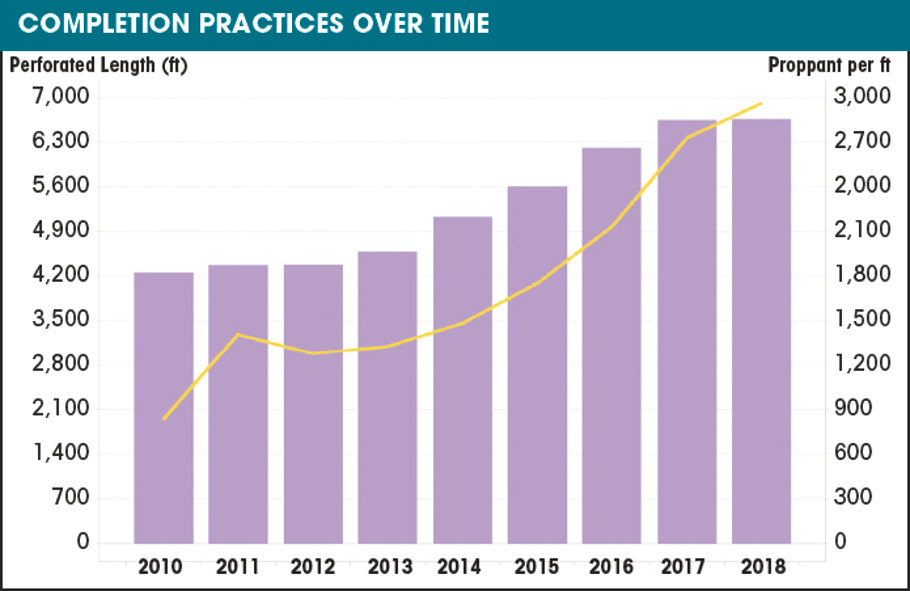
Increased proppant intensity and longer laterals are helping modern wells (2017 and 2018) outperform wells completed prior to 2016. (Source: Drillinginfo)

A consistent improvement in the region’s gas type curves demonstrates the application of new well completion designs impact on production. (Source: Drillinginfo)
Recommended Reading
Midstream Operators See Strong NGL Performance in Q4
2024-02-20 - Export demand drives a record fourth quarter as companies including Enterprise Products Partners, MPLX and Williams look to expand in the NGL market.
Post $7.1B Crestwood Deal, Energy Transfer ‘Ready to Roll’ on M&A—CEO
2024-02-15 - Energy Transfer co-CEO Tom Long said the company is continuing to evaluate deal opportunities following the acquisitions of Lotus and Crestwood Equity Partners in 2023.
Apollo Buys Out New Fortress Energy’s 20% Stake in LNG Firm Energos
2024-02-15 - New Fortress Energy will sell its 20% stake in Energos Infrastructure, created by the company and Apollo, but maintain charters with LNG vessels.
Phillips 66 Explores Sale of Pipeline Stake Worth Over $1B, Sources Say
2024-03-26 - The Rockies Express Pipeline is a 2730-km interstate natural gas pipeline stretching from Wyoming and Colorado in the West to Ohio.
Summit Midstream Sells Utica Interests to MPLX for $625MM
2024-03-22 - Summit Midstream is selling Utica assets to MPLX, which include a natural gas and condensate pipeline network and storage.

